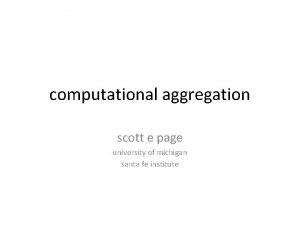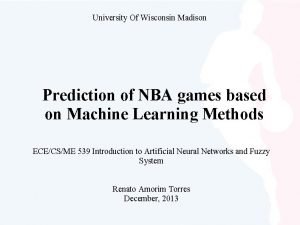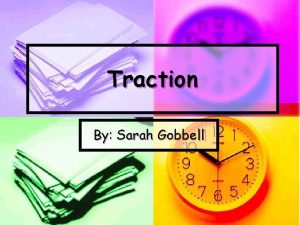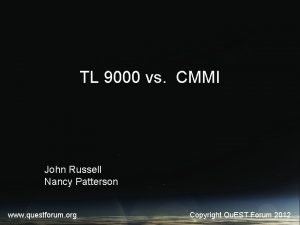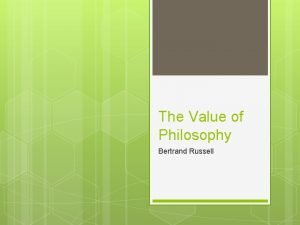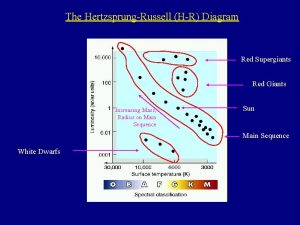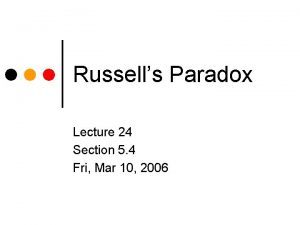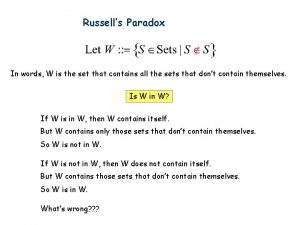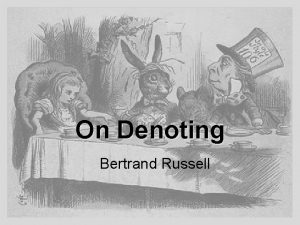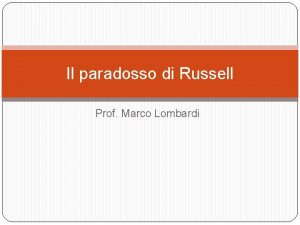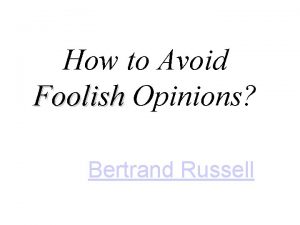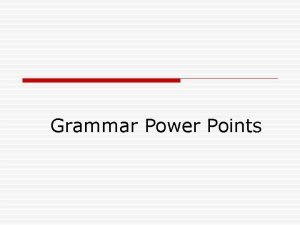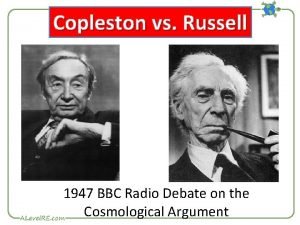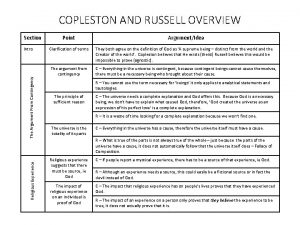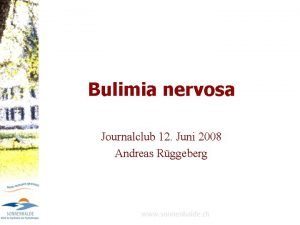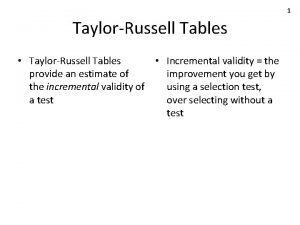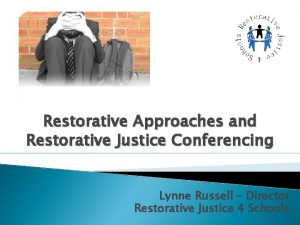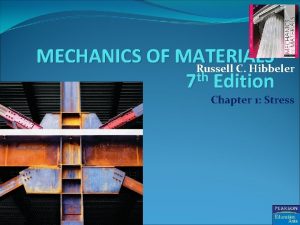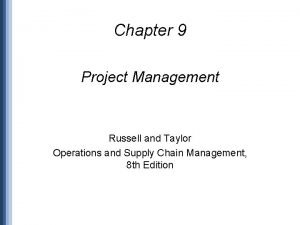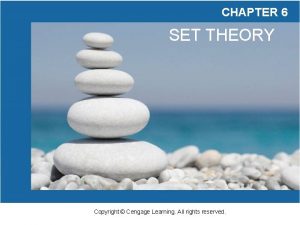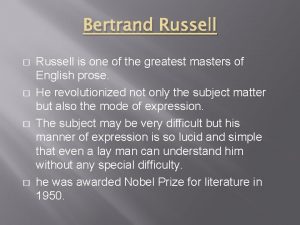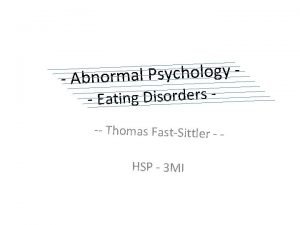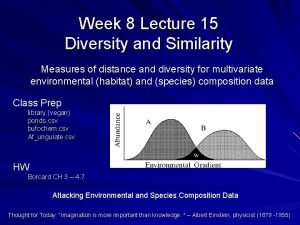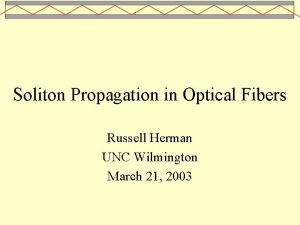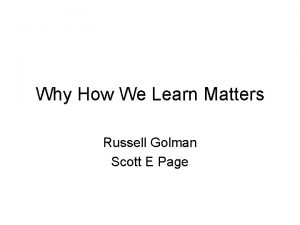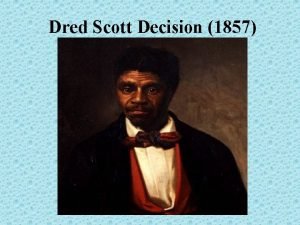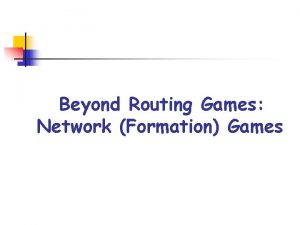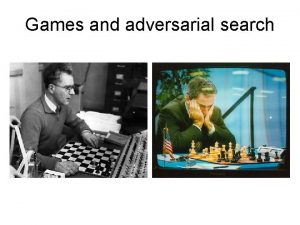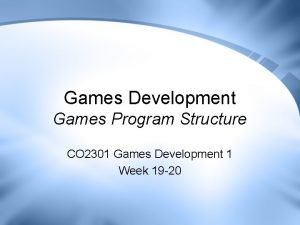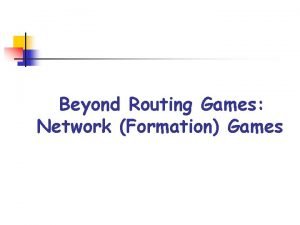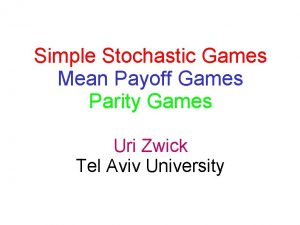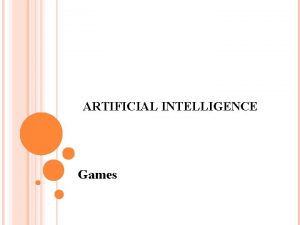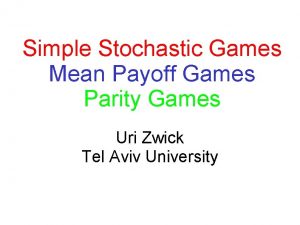Learning in Games Scott E Page Russell Golman


























































- Slides: 58

Learning in Games Scott E Page Russell Golman & Jenna Bednar University of Michigan-Ann Arbor


Overview Analytic and Computational Models Nash Equilibrium – Stability – Basins of Attraction Cultural Learning Agent Models

Domains of Interest Computable Analytic

Learning/Adaptation Diversity Interactions/Epistasis Networks/Geography

Equilibrium Science We can start by looking at the role that learning rules play in equilibrium systems. This will give us some insight into whether they’ll matter in complex systems.

Players

Actions Cooperate: C Defect: D

Payoffs C C 4, 4 D 0, 6 D 6, 0 2, 2

Best Responses C C 4, 4 D 0, 6 D 6, 0 2, 2

Best Responses C C 4, 4 D 0, 6 D 6, 0 2, 2

Nash Equilibrium C C 4, 4 D 0, 6 D 6, 0 2, 2

“Equilibrium” Based Science Step 1: Set up game Step 2: Solve for equilibrium Step 3: Show equilibrium depends on parameters of model Step 4: Provide empirical support

Is Equilibrium Enough? Existence: Equilibrium exists Stability: Equilibrium is stable Attainable: Equilibrium is attained by a learning rule.

Examples Best respond to current state Better respond Mimic best Mimic better Include portions of best or better Random with death of the unfit

Stability can only be defined relative to a learning dynamic. In dynamical systems, we often take that dynamic to be a best response function, but with human actors we need not assume people best respond.

Battle of Sexes Game EF EF 3, 1 CG 0, 0 1, 3

Three Equilibria 3/4 1/4 3, 1 3/4 0, 0 1, 3

Unstable Mixed? 1/4 +e 3, 1 EF CG 0, 0 3/4 - e 0, 0 3/4 + 3 e 1, 3 3/4 - 3 e

Note the Implicit Assumption Our stability analysis assumed that Player 1 would best respond to Player 2’s tremble. However, the learning rule could be go to the mixed strategy equilibrium. If so, Player 1 would sit tight and Player 2 would return to the mixed strategy equilibrium.

Empirical Foundations We need to have some understanding of how people learn and adapt to say anything about stability.

Classes of Learning Rules Belief Based Learning Rules: People best respond given their beliefs about how other people play. Replicator Learning Rules: People replicate successful actions of others.

Stability Results An extensive literature provides conditions (fairly week) under which the two learning rules have identical stability property. Synopsis: Learning rules do not matter

Basins Question Do games exist in which best response dynamics and replicator dynamics produce different basins of attraction? Question: Does learning matter?

Best Response Dynamics x = mixed strategy of Player 1 y = mixed strategy of Player 2 dx/dt = BR(y) - x dy/dt = BR(x) - y

Replicator Dynamics dxi/dt = xi( i - ave) dyi/dt = yi( i - ave)

Symmetric Matrix Game A B C 60 60 30 B 30 70 20 C 50 25 25 A

A A B B B C

Best Response Basins A B C 60 60 30 B 30 70 20 C 50 25 25 A A > B iff 60 p. A + 60 p. B + 30 p. C > 30 p. A + 70 p. B + 20 p. C A > C iff 60 p. A + 60 p. B + 30 p. C > 50 p. A + 25 p. B + 25 p. C

Barycentric Coordinates C . 7 C +. 3 B. 4 A +. 2 B +. 4 C A B. 5 A +. 5 B

Best Responses C A A C C B B B

Stable Equilibria C A A C C B B B

Best Response Basins C A A C A B B B

Replicator Dynamics Basins C A A C ? B B B

Replicator Dynamics C A A CA B B

Recall: Basins Question Do games exist in which best response dynamics and replicator dynamics produce very different basins of attraction? Question: Does learning matter?

Conjecture For any > 0, There exists a symmetric matrix game such that the basins of attraction for distinct equilibria under continuous time best response dynamics and replicator dynamics overlap by less than

Collective Action Game SI Coop Pred Naive SI 2 2 Coop 1 N+1 1 1 Pred 0 0 0 N 2 Naive 0 0 -N 2 0

Naïve Goes Away Pred SI Coop

Basins on Face Pred SI Coop

Lots of Predatory Pred SI Coop

Best Response Pred SI Coop

Replicator Pred SI Coop

The Math dxi/dt = xi( i - ave) ave = 2 x. S + x. C (1+Nx. C) dxc/dt = xc[(1+ Nx. C- - 2 x. S - x. C (1+Nx. C)] dxc/dt = xc[(1+ Nx. C)(1 - x. C) - 2 x. S]

Choose N > 1/ Assume xc > dxc/dt = xc[(1+ Nx. C)(1 - x. C) - 2 x. S] dxc/dt > [2(1 - ) - 2(1 - )] = 0 Therefore, xc always increases.

Collective Action Game SI Coop Pred Naive SI 2 2 Coop 1 N+1 1 1 Pred 0 0 0 N 2 Naive 0 0 -N 2 0

Theorem: In any symmetric matrix game for which best response and replicator dynamics attain different equilibria with probability one, there exists an action A that is both an initial best response with probability one and not an equilibrium.

Complex Systems Primatives Learning/Adaptation Diversity Interactions/Epistasis Networks/Geography

Diversity EWA (Wilcox) and Quantal Response (Golman) learning models are misspecified for heterogenous agents. EWA = “hybrid of response and belief based learning”

Convex Combinations Suppose the population learns using the following rule a (Best Response) + (1 -a) Replicator

Claim: There exists a class of games in which Best Response, Replicator Dynamics, and any fixed convex combination select distinct equilibria with probability one. Best Response -> A Replicator -> B a BR + (1 -a) Rep -> C

Interactions 7, 7 4, 14 14, 4 5, 5 7, 7 3, 11 11, 3 5, 5

Game. S Theory E O E M O M O E O M Bednar (2008), Bednar and Page (2007)

Learning Spillovers C A A C C B B B

Initial Conditions C A A C C B B B

Networks/Geography B C B B A C C C B C A B B A A B B B A A A B ? A C A A B B C B B A C C C A B A

ABM complement Math

Equilibrium Selection Learning Rule Spillovers Diversity Geography/Networks
 Escala de golman
Escala de golman Scott e page michigan
Scott e page michigan Hunger games chapter 15 questions and answers
Hunger games chapter 15 questions and answers Outdoor games and indoor games
Outdoor games and indoor games Title page example apa
Title page example apa Cuadro comparativo entre e-learning b-learning y m-learning
Cuadro comparativo entre e-learning b-learning y m-learning Moving learning games forward
Moving learning games forward Prediction of nba games based on machine learning methods
Prediction of nba games based on machine learning methods Student learning soace
Student learning soace What is horror genre answer key
What is horror genre answer key Dunlop skin traction
Dunlop skin traction Iso 9001 vs cmmi
Iso 9001 vs cmmi Bertrand russell on the value of philosophy
Bertrand russell on the value of philosophy The plot against the people
The plot against the people Penn state economics association
Penn state economics association Where are red supergiants on the hr diagram
Where are red supergiants on the hr diagram Fph eportfolio
Fph eportfolio Dr stuart russell
Dr stuart russell Diagram bintang
Diagram bintang Fundador de los testigos de jehova charles taze russell
Fundador de los testigos de jehova charles taze russell Russell’s paradox
Russell’s paradox Russell's paradox
Russell's paradox Bertrand russell on denoting
Bertrand russell on denoting Celia russell
Celia russell Teorema di russell
Teorema di russell Foolish opinions
Foolish opinions H r diagram worksheet
H r diagram worksheet Russell wallace day
Russell wallace day Adeline russell
Adeline russell Plaque index scoring criteria
Plaque index scoring criteria James russell odom
James russell odom James russell odom and james clayton lawson
James russell odom and james clayton lawson Russell vs copleston debate
Russell vs copleston debate Copleston and russell debate summary
Copleston and russell debate summary Russell zeichen bulimie
Russell zeichen bulimie Taylor-russell tables are used to estimate
Taylor-russell tables are used to estimate John russell houston
John russell houston Horror literary genre
Horror literary genre The snow had begun in the gloaming
The snow had begun in the gloaming Russell and norvig
Russell and norvig Richard russell rick riordan jr
Richard russell rick riordan jr Lynne russell
Lynne russell One line prayer quotes
One line prayer quotes Russell c. hibbeler - mechanics of materials solution
Russell c. hibbeler - mechanics of materials solution Bauer 1992e-b
Bauer 1992e-b Russell conwell acres of diamonds apush
Russell conwell acres of diamonds apush M russell ballard age
M russell ballard age Richard russell military contributions
Richard russell military contributions Entfernungsbestimmung astronomie
Entfernungsbestimmung astronomie Russell and taylor operations management
Russell and taylor operations management Russell's paradox
Russell's paradox Russell prose style
Russell prose style Russell and atwell guardian
Russell and atwell guardian Russell loveridge
Russell loveridge Russell's sign
Russell's sign Simple matching coefficient
Simple matching coefficient Sunshine.chpc.utah.edu/labs/star life
Sunshine.chpc.utah.edu/labs/star life Russell herman
Russell herman Service environment
Service environment

